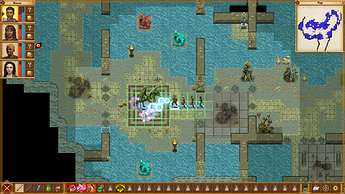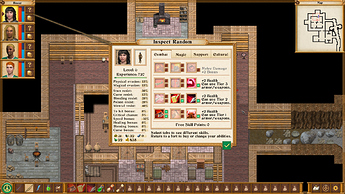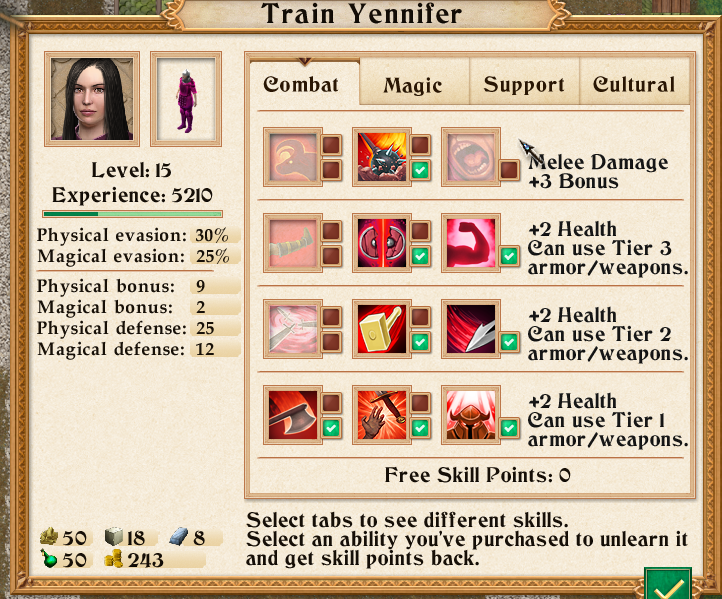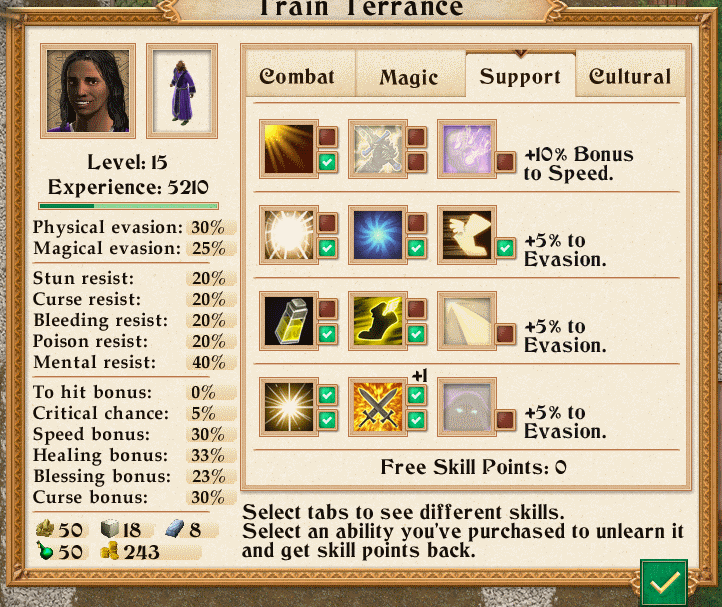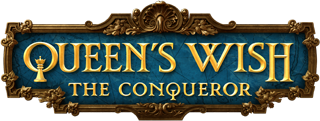
Queen’s Wish is a new party based RPG by Spiderweb Software, A.K.A. Jeff Vogel. Queen’s Wish is also a new IP, set in a new world, and stands apart from other Vogel games for several reasons beyond that of a new setting.
Queen’s Wish: The Conqueror is a epic, indie fantasy role-playing adventure. Wander free through an enormous world, sink into a fascinating story full of surprises and interesting decisions, and use your cunning to outwit a multitude of dungeons and foes. In this open-ended adventure, you can build an Empire or free the oppressed. Serve the Queen or rebel. Fight or use diplomacy. Build fortresses, smith enchanted blades and armor, and deal with nagging relatives!
GOG:
You can purchase or download a huge demo for the game at the developer’s own website here:
https://www.spiderwebsoftware.com/queenswish/index.html
Gamers familiar with other Spiderweb games might be curious about some of the differences to expect, and while I won’t make an effort to give an exhaustive list of differences, the big ones might be summed up as follows:
Grinding is all but done away with. Jeff Vogel himself says it best when talking about his goal with this game:
- Grinding is boring and lame. This game doesn’t have grinding. If you find a dungeon, you can almost always beat it and move on to exciting new stuff. Haven only rewards winners, though. You have to enter every dungeon determined to WIN. Coffee is for closers.
Whatever else you can say about Queen’s Wish, it’s determined to not waste your time.
- Part of the reason for the free respec system is because you need it. On higher difficulty levels, you will have to make hard decisions about which situational abilities you need to take to beat a dungeon. Most people who thing the game is simple and dumbed down have barely left the low level zones.
Regarding respec: On normal, the balance is very fine so that, with care and strategy, you should be able to beat about any dungeon without respeccing.
On higher difficulties, respeccing tends to go by region, not individual dungeon, so it’s not a case where you have to spend hours on every dungeon swapping stuff out. (Remember, this game had a LOT of testers. It’s very carefully balanced.)
And he touches a bit more on a perceived simplicity of the early game systems brought up by vocal gamers:
Q: This Game Is Too Simple!
A: Give it a little time!Queen’s Wish has a lot going on. Stat-building. Fortress-building. Diplomacy. Exploration. Being nagged by your family.
The game starts gradually, so that we don’t overwhelm new players. It’s easy to confuse people when a game contains an entirely new sort of RPG system. Once you start opening up your new forts, you’ll have plenty of difficult choices to make.
It may help to think of fort-building as another track you use to level up your characters. Much of your power comes from your fortresses, along with much of your best equipment.
Q: Why Don’t I Get Experience For Trash Monsters?
A: Queen’s Wish reward you generously for finishing missions (with experience, treasure, and resources).However, trash is trash. Avoid it whenever possible. You have to finish dungeons all in one run, so the way you are rewarded for avoidable fights is by avoiding them.
Though there is a reward of sorts for fighting trash: Killing monsters restores your energy (a.k.a. mana, which is often on the verge of being in short supply if your party over extends themselves.)
It should be emphasized here that the gameplay is heavily organized around the forts, towns and outposts. There’s a primary fort that serves as a central hub, in addition to more than a dozen other secondary hubs (additional forts, towns, and outposts) scattered throughout the land. Many of these can be upgraded, which will improve your economy, realm defenses, party composition, character stats and skills, and gear. The more forts you control and upgrade, the better off you will be.
If anybody is interested in trying before buying, there’s a huge demo available at the developer’s website (at the bottom of this page).
I’ve spent 9 hours with the game so far and will be talking about my own time with it in this thread.
